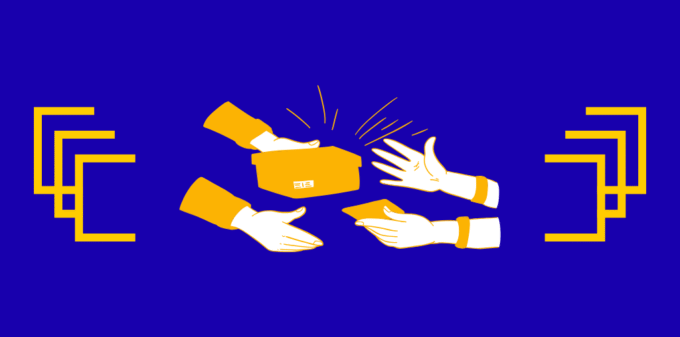Table Of Content
- The RTO Math: Why “Free COD” is Bankrupting You
- The Psychology: Why ₹50 Works
- Step-by-Step Implementation Guide
- 1. For Shopify Users
- 2. For WooCommerce Users
- 3. The “Manual” Method (For WhatsApp/Instagram Sellers)
- Copy-Paste WhatsApp Scripts
- Real-World Case Study: Apparel Brand in UP
- Conclusion: Volume is Vanity, RTO is Sanity
- Frequently Asked Questions (FAQ)
Cash on Delivery (COD) dominates India’s e-commerce landscape, accounting for 60-70% of orders in Tier-2/3 cities. But here is the hidden tax: RTO (Return to Origin).
For every 1,000 COD orders, 300 come back. If your average shipping cost is ₹80, you are losing ₹24,000 per month on failed deliveries alone.
Most founders accept this as “the cost of doing business in Bharat.” I don’t.
This guide explains the “Micro-Deposit Strategy”—how asking for just ₹50 upfront can cut your RTO by 80% without killing your conversion rate.
The RTO Math: Why “Free COD” is Bankrupting You

Most founders look at RTO as “Lost Revenue.” That is wrong. RTO is “Cash Burn.”
Here is the actual cost of one failed COD order.
The RTO Loss Calculator
| Expense Item | Cost (Average) |
| Forward Shipping | ₹70 |
| Reverse Shipping (RTO Charge) | ₹70 |
| Packaging Cost (Wasted) | ₹20 |
| Operations/Manpower | ₹15 |
| Marketing CAC (Wasted Ad Spend) | ₹300 |
| TOTAL LOSS per Return | ₹475 |
The Insight: Every time a customer refuses a COD order, you don’t just lose the profit; you pull ₹475 out of your bank account and set it on fire.
The Psychology: Why ₹50 Works
You aren’t asking for the full amount (which creates trust issues). You are asking for a “Token Amount” (which proves intent).
- Sunk Cost Fallacy: Once a human pays even ₹50, they are psychologically committed. They won’t refuse the order because they don’t want to “lose” their deposit.
- The Filter: A fraudster or an impulsive “window shopper” will never pay ₹50. This filter eliminates 90% of your bad orders instantly.
- Mental Accounting: Paying a small amount frames the purchase as “Real Money Spent,” reducing cancellations.
Step-by-Step Implementation Guide
You don’t need a custom-coded website. Here is how to set it up on popular platforms.
1. For Shopify Users
- The App: Use GoKwik or Depo (Deposit & Split Payments).
- The Setup: Enable “Partial COD.” Set a rule: “Orders above ₹2,000 require ₹100 deposit.”
- The Automation: Integrate with Interakt to send automatic WhatsApp reminders if the deposit isn’t paid within 15 minutes.
2. For WooCommerce Users
- The Plugin: Partial COD by WP Swings.
- The Setup: Create a “Partial Payment” gateway that charges a fixed fee (₹50) and marks the rest as “Due on Delivery.”
3. The “Manual” Method (For WhatsApp/Instagram Sellers)
- Step 1: Accept the order.
- Step 2: Send a Razorpay Payment Link for ₹50.
- Step 3: Only ship once the link is paid.
Copy-Paste WhatsApp Scripts
Don’t sound like a robot. Use these scripts to convert customers.
Script A: The “Verification” Nudge (Soft Approach)
“Hi [Name]! 👋 Thanks for ordering the [Product Name]. Since this is a high-value item, we need a small ₹50 confirmation deposit to dispatch your order. The remaining amount can be paid via Cash on Delivery.
Pay here to confirm shipment: [UPI Link]
Note: This ensures we don’t ship to fake addresses. Thanks for understanding!“
Script B: The “Discount” Hook (Aggressive Approach)
“Hi [Name]! Your order is ready to ship. 📦 Want to save ₹50? Pay a small ₹99 booking amount now, and we will give you ₹50 OFF the total bill!
Pay ₹99 now -> [UPI Link] Remaining payable on delivery: [Lower Amount]”
Real-World Case Study: Apparel Brand in UP
- Before: 1,200 Monthly COD Orders. 28% RTO.
- The Change: Implemented ₹50 Deposit via Interakt.
- After (3 Months): 8% RTO.
- Savings: ₹96,000 saved in logistics costs per month.
Conclusion: Volume is Vanity, RTO is Sanity
Stop celebrating “1,000 Orders/Day” if 400 of them are coming back. In Bharat, the “Cash on Delivery” button is often treated as “Add to Wishlist.”
By adding a Micro-Friction (₹50 Deposit), you filter out the noise and focus on the signal.
(Need help setting up your RTO stack? [Book a 1:1 Strategy Call])
Frequently Asked Questions (FAQ)
The wrong customers will run away. A genuine customer who actually wants the product will rarely hesitate to pay ₹50 via UPI. If they refuse to pay ₹50, they likely would have refused the package at the door.
Yes, as long as it is clearly communicated as a “Shipping & Handling Fee” in your Terms of Service. However, refunding it upon successful delivery builds more trust.
Automate it. Use payment gateway APIs (like Razorpay or Cashfree) to trigger a refund 24 hours after the courier marks the status as “Delivered.”
Not recommended. For items under ₹500, the friction of paying ₹50 is too high compared to the product value. Use this strategy for orders above ₹1,000.




